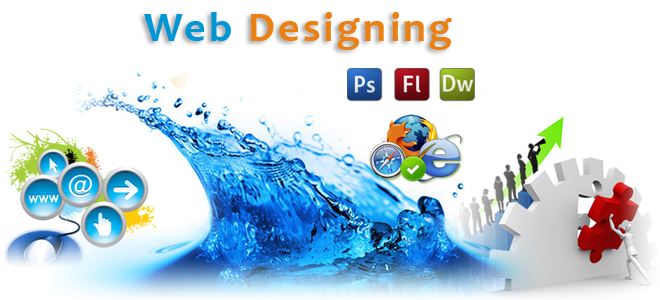Creating a website involves much more than uploading text and images. A strong website design captures attention, delivers a smooth experience, and converts visitors into customers. This guide is packed with smart suggestions, user-centered insights, and practical copywriting strategies to help you enhance your website design in a way that’s beneficial for both visitors and search engines.
Why Website Design Matters
A well-designed website builds trust, strengthens brand identity, and drives business growth. Users decide within seconds whether to stay or leave. That means your layout, navigation, and visuals must be intuitive and appealing right from the start.
Make a Powerful First Impression
Your homepage is your digital storefront. Keep it clean, modern, and visually engaging. Use hero images or sliders with concise, benefit-driven headlines. Include your unique value proposition within the top fold and avoid clutter. Consistency in fonts, color schemes, and visual tone helps set user expectations.
Simplify the Navigation Structure
Complex menus confuse visitors. Limit your navigation bar to essential items like Home, About, Services, and Contact. Use dropdowns only when necessary. Add breadcrumb trails and ensure internal links connect users to relevant pages naturally. Easy navigation improves SEO and user satisfaction.
Optimize for Mobile Responsiveness
With mobile usage surpassing desktops, responsive design is essential. Use scalable layouts, flexible images, and readable text across all screen sizes. Test your website across various devices and browsers to ensure consistency and accessibility.
Use Modern Verification Methods Instead of CAPTCHAs
Old-style CAPTCHAs can ruin user experience. Replace them with invisible reCAPTCHA, time-based honeypots, or email verification. These methods block bots while keeping genuine users engaged.
Guide Users with Strong Call-to-Actions (CTAs)
CTAs must be bold, benefit-focused, and strategically placed. Use actionable phrases like “Get a Free Quote,” “Book a Consultation,” or “Start Your Trial.” Place CTAs on every major section, especially at the end of pages or service descriptions.
Place Key Information Where It Counts
Display contact info, services, and pricing details where users expect them. Use headings and subheadings to break content into readable chunks. Bullets, icons, and highlights make important content easy to scan.
Streamline Forms for Better Conversion
Ask only for essential details. For example, name, email, and message are often enough for initial contact. Provide a progress bar for longer forms and always offer a way to cancel or go back without losing data.
Use High-Quality Visuals Consistently
Images must be clear, relevant, and optimized. Avoid pixelated or unrelated stock photos. Create visual consistency with uniform photo styles, icons, and illustrations. Compress files for faster load times without compromising quality.
Improve Site Speed and Performance
Site speed is both a user experience and SEO factor. Compress images, leverage browser caching, use a content delivery network (CDN), and clean up unnecessary plugins. Aim for a load time of under 3 seconds.
Add Social Proof and Trust Elements
Build trust by showcasing client reviews, testimonials, badges, and partner logos. Add a dedicated testimonial section on your homepage or service pages. Use real client names and images whenever possible.
Design with SEO Best Practices in Mind
A beautiful website is ineffective without visibility. Use proper heading tags (H1, H2, H3), include meta descriptions, alt tags for images, and readable URLs. Avoid keyword stuffing and use internal linking smartly.
Keep Your Website Updated
Regularly review and update your site content. Replace outdated offers, update your team bios, refresh blog posts, and remove inactive pages. A fresh website reflects a proactive business approach.
Build a Blog or Knowledge Center
A blog drives traffic, supports SEO, and builds authority. Write about industry trends, how-to guides, FAQs, or case studies. Update content frequently and interlink blog articles with main pages.
Connect Your Social Media
Include social media icons in your header or footer. Link to your active platforms and consider embedding your latest social media feeds. This keeps your website dynamic and encourages followers.
Use White Space Wisely
Don’t crowd your content. White space gives breathing room to visuals and text, making content easier to read. It also enhances visual hierarchy and design aesthetics.
Offer Language Options (If Needed)
If your audience is multilingual, provide a language selector. Multilingual sites help reach a broader audience and improve engagement across global markets.
Monitor Visitor Behavior with Analytics
Track how visitors interact with your site. Use tools like Google Analytics, Hotjar, or Clarity to learn where they click, how far they scroll, and where they exit. This data guides your design improvements.
Make Accessibility a Priority
Design your website so everyone can use it. Use readable fonts, keyboard navigation, alt text for images, and proper contrast between text and background. Follow WCAG guidelines for full accessibility.
Work with Professional Designers When Necessary
Templates are useful, but for custom solutions and strong branding, work with professionals. Companies like RedSpider specialize in website design and development in Dubai. Their team ensures your website is responsive, visually appealing, and SEO-optimized.
Essential Web Design Checklist for Your Site
- Clean, minimal layout
- Mobile responsiveness
- Fast load times
- Clear CTAs on every page
- SEO-optimized Web structure
- High-quality, relevant visuals
- Updated and accurate content
- Clear contact information
- Trust signals like testimonials
- Accessible to all users
Final Thoughts
Your website is a 24/7 representation of your business. It should load fast, look polished, and deliver value clearly. From improving user navigation to adding social proof, each design element should serve a purpose. Start with the basics, enhance over time, and don’t hesitate to bring in experts when needed. A well-optimized website brings real, measurable business benefits. Trust companies like RedSpider Web & Art Design in Dubai to help you craft an online experience that impresses and converts.



